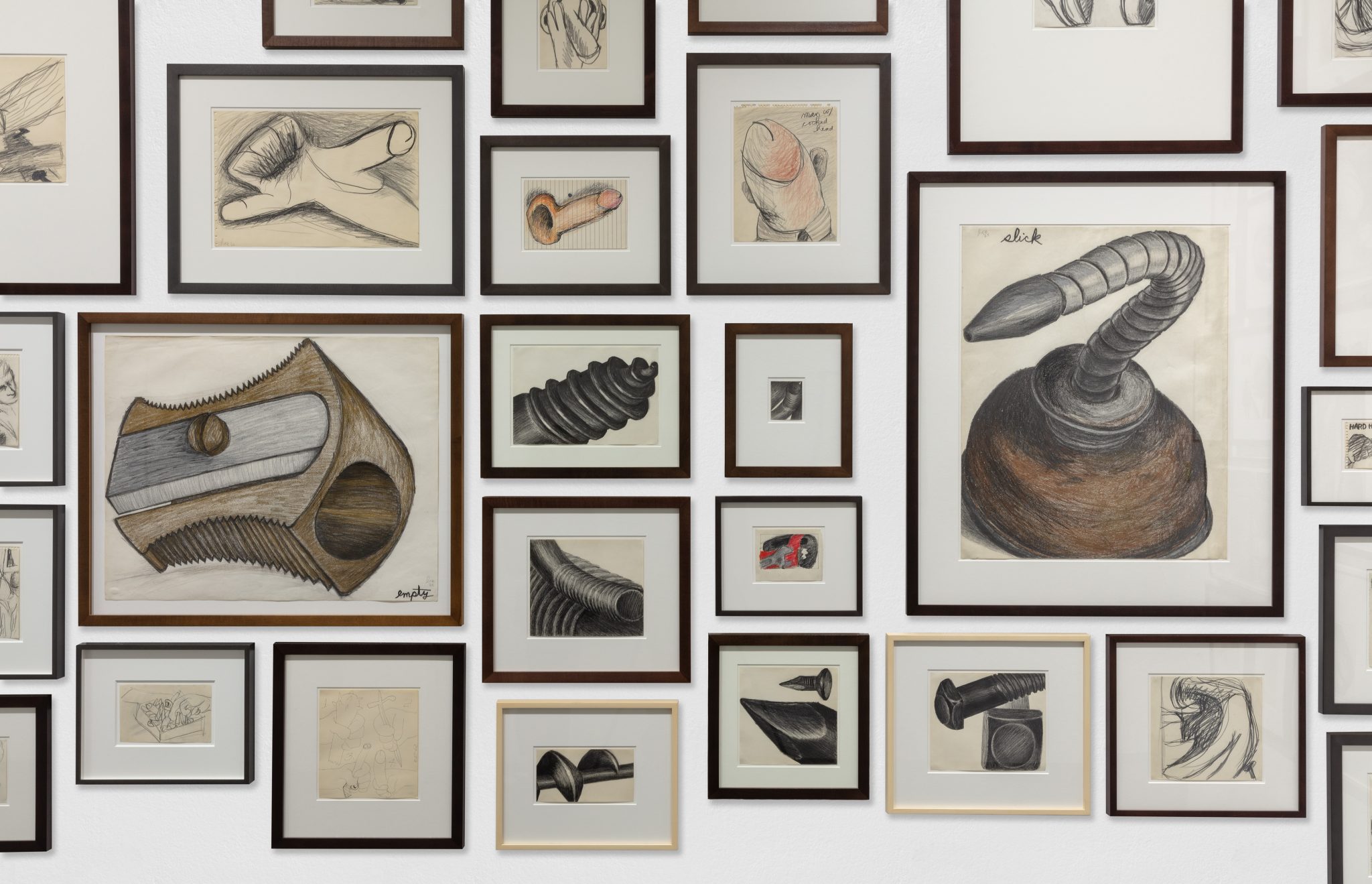The grotesque visual ironies of ‘Strike’ at Turin’s Pinacoteca Agnelli sheds light on the twists and turns of the artist’s own destructive attitude to her career
Reading the words of Lee Lozano’s General Strike Piece (1969), at the entrance to this show, is like listening to a sour cackle through rotten teeth. While the Pinacoteca Agnelli is currently receiving plenty of hype under new director (and this show’s cocurator) Sarah Cosulich, here is the American artist claiming the right, circa her fortieth year, to ‘gradually but determinedly avoid to be present at official or public uptown functions or gatherings’, until her definitive dropping out of the New York artworld around 1970. General Strike Piece is one of Lozano’s so-called Language Pieces, often handwritten in block letters, dictated by self-imposed rules and composed as a kind of script of actions, eg masturbating, smoking grass ‘to stay high all day and see what happens’ or being without grass for the same amount of time. The conceptual core thus had a performative effect, actively shaping Lozano’s everyday life. The stated desire to dedicate herself to a ‘total personal and public revolution’ away from the ‘uptown’ scene also fit perfectly into the utopian fantasies of late-60s counterculture, expressed in radical acts of defection and refusal for artists. The piece appears as a statement of intent, introducing us to a practice that mixes art and life; it invites viewers to read what follows – a selection of paintings from both her figurative and minimalist bodies of work, alongside accompanying studies and drawings – through the lens of her conceptual works.
In Strike, then, you’re encouraged to feel presence as the other side of absence, and figuration as the flipside of abstraction. This emerges clearly in the first room, via a breathtaking flood of academic graphite, crayon and pencil drawings (1959–64) of fragmented human anatomies; here Lozano combines male body parts with props and tools. These sardonic chimeras build a fundamental vocabulary, preparing us for the grotesque visual irony that dominates the cartoonish pop-expressionist Pun drawing series (1962), satirical compositions of words and caricatural images. One of these consists of a dick stuck in the roller of a typewriter on whose keys are words like think, cock, cunt and work. Again, Lozano’s practice prescribes actions. It’s entertaining to guess: who is this dick? A conceptual male artist? The entire male gender? Or perhaps it belongs to Clement Greenberg: after all, Lozano seems to play with – and make worldly – all the modernist modes that the influential New York critic traced and wrote about, from Abstract Expressionism to Pop art, winding up with post-painterly abstraction.

Elsewhere, the Tools paintings (1962–64) explode with vigorous brushstrokes, and become progressively more abstract until it is difficult to recognise the syncretism of bodies and tools that Lozano is apparently driving at. Anthropomorphised bolts, screws and (maybe) wrenches are marked by an eroticism situated between the tendency to reveal everything and the inclination to fade it into something else. Abstraction is finally achieved in works from the All verbs series (1964-65), such as Clamp, Crook and Swap: monumental and minimalist paintings, where she reached pure action made by pure material, using straight brushstrokes and geometrical shapes where form and colour merge. Thus Strike, as we’re apprised from the outset, draws attention to the various fractures, twists, ruptures and withdrawals within Lozano’s career, and the artworld that surrounded and propelled them.
In this sense Lozano’s artistic practice runs directly parallel to her life, linked by the same tendency to progressively subtract, to lighten the load, before completely fading and disappearing. This becomes more and more clear when reading Lozano’s doubts around her search for a new knowledge system and way of learning in Notebook 8 (1970) – placed as the exhibition’s afterword – where she’s again looking for a fresh start. What the exhibition makes clear is not only her art’s protean nature, but how it mirrored a life angled towards self-annihilation. Lozano progressively changed her own forename from Lenore to Lee to just E; she finally elected to be buried, in 1999, under an unmarked tombstone.
Strike at Pinacoteca Agnelli, Turin, through 23 July
